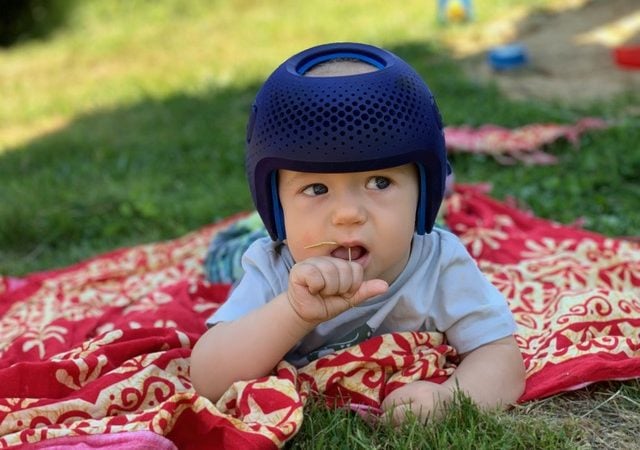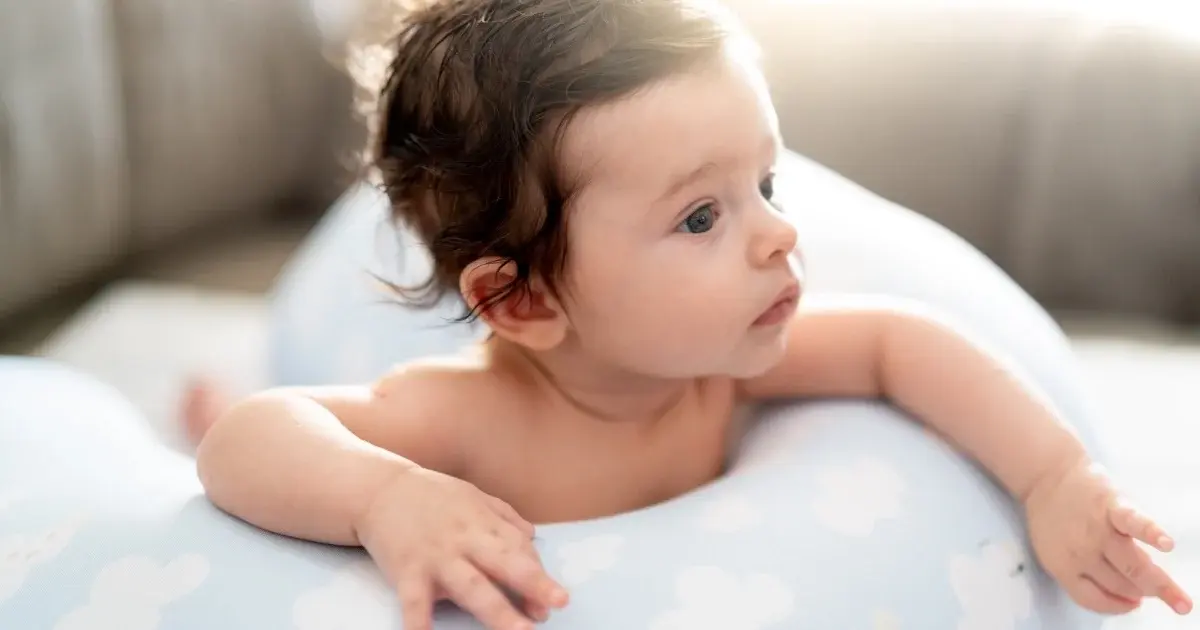
Cranial Helmet Wear During a Temperature
One of the largest determining factors as to whether your baby should continue helmet wear during their illness is whether or not they have a high temperature. It's important to note that this isn't in regards to their temperature based on the environment they are in, but rather their core temperature.
Although not an illness and perfectly natural, some babies also experience a temperature when they are teething.
If your little one does have a temperature, we recommend removing the helmet until their temperature returns to normal. Depending on the illness, this could be a day or two, or a couple of weeks.
Tip: If you're a new parent, you might be wondering how best to take your baby's temperature. The NHS offer a useful guide and various options to do so on their website.
Plagiocephaly Helmet Wear During Chicken Pox
Some babies experience chicken pox during their first few years, although this is quite uncommon. For those that do experience it, the infection results in small red spots and itchy rashes. This is more uncomfortable than dangerous, and some babies experience the spots and rashes on their body, whereas others sometimes experience it on the head. If this is the case, we advise removing your little one's TiMbandAir until their spots scab over and are no longer open or irritable.
Some babies can experience a temperature during chicken pox, but not always. Again, make sure your baby's temperature has returned to normal before commencing TiMbandAir treatment. If your baby doesn't have spots on their head but does have a temperature, you should still leave the helmet off until this has settled.
Does Illness Affect Progress?
When babies are unable to wear their helmet due to illness, many parents become concerned that progress with their little one's treatment will be drastically stalled. However, when babies are poorly, we find that most of their energy targets fighting the illness rather than growing. Because of this, time without the helmet doesn't usually involve much head growth, which means that progress can continue as normal once your little one is no longer poorly.
Helmet Wear During Rashes
Some babies experience heat rash around their face and head. In such cases, you may wonder whether to remove your little one's helmet until the skin has recovered. In most cases, we recommend applying Sudoecrem to the rash and continuing helmet wear. However, for more extreme rashes that are becoming irritated, give your baby's head some time to air and apply Sudocrem without the helmet.
If your baby is poorly and you're unsure as to whether they should be wearing their helmet or not, get in touch with the office and we will be happy to advise and put your mind at rest!
For more advice and information on your baby's plagiocephaly helmet, take a look at our blog posts.


